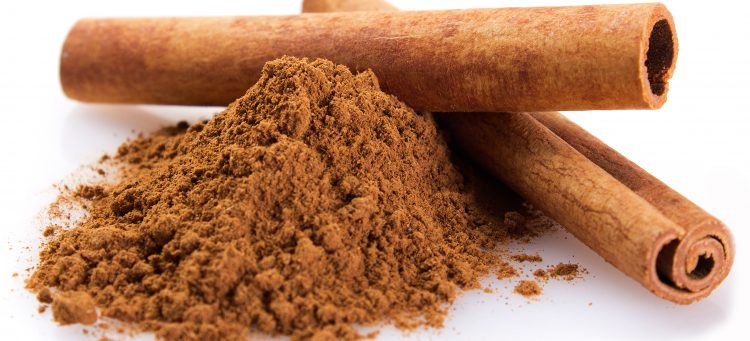
In the Spotlight
CINNAMON: New perspectives on an old spice
May, 2016
For many, cinnamon is closely associated with the comforts of home. We use it to flavour our breakfast cereal, our baking and, of course, our tea. But cinnamon is more than just a curly stick on the spice rack. You may not realize it, but cinnamon works hard to keep us healthy. If you’re already a cinnamon junkie, congratulations! You’re already making good choices. If you’re a cinnamon sceptic, you might want to think about – -developing a habit.
The Spice of Kings
In the ancient world, cinnamon sales were tightly controlled by Eastern spice traders, and the methods of the plant’s cultivation were kept secret. As a result, the spice was so mysterious and expensive that it was considered a flavouring fit only for royalty. Even then, it was saved and used only on special occasions. Luckily for us, today we can enjoy cinnamon daily, and we are able to find out exactly what cinnamon is and where it comes from.
Cinnamon, in its iconic curly form, is actually the peeled and dried inner bark of the cinnamon tree, a plant native to South Asia. That’s right, that tasty powder we sprinkle onto our morning oatmeal is nothing more than ground up wood shavings. Delicious wood shavings, mind you.
More than Tasty
From its suggested role in delaying Alzheimer’s disease to its documented ability to shrink cancer cells, more potential health benefits of cinnamon are being discovered every day. While the science isn’t in on many of these exciting claims, here are a few verified cinnamon health tips that you can use in your everyday life.
Cinnamon is a natural sweetener but avoids the high calorie count that we normally find in its sugary counterparts. By reaching for the cinnamon instead of the sugar bowl when you make your next cup of coffee, you can enjoy a rich flavour without the added calories. Additionally, cinnamon actively helps to lower blood-sugar levels by inhibiting your body’s ability to absorb sugars into the blood. This makes cinnamon a popular choice for diabetics and dieters alike.
Cinnamon has been proven to have anti–bacterial properties. What does that mean? Next time you feel that telltale tingle in your throat and sense a cold coming on, treat yourself to some cinnamon tea. The cinnamon will help to kill the bacteria in your throat and reduce the symptoms of your cold.
Cassia or Ceylon?
There are a great many varieties of cinnamon out in the market, and not all of them share the same properties. But don’t panic, cinnamon can be boiled down into two main categories: Cassia and Ceylon.
If your interest in cinnamon is primarily culinary, Cassia (or its close relative, Saigon) is the way to go. You can recognize it by its rich flavour and reddish-brown colour. Most grocery stores will stock these varieties exclusively.
If the health properties of cinnamon attract you, Ceylon is the variety you want. It has a lighter colour and a sweeter aroma than Cassia, and a higher price as well. While both varieties can help to lower your blood sugar or ward off a cold, only Ceylon has been shown to have the properties to reduce the risk of higher-profile illnesses such as cancer or dementia. t8n
Homemade Chai
In a medium-sized pot, simmer 6 tsp of black tea in 1/2 L of water and 1/2 L of milk.
To the simmering mixture, add 1 tsp each of ground black pepper, ground cinnamon and ground ginger. Next, add 1/2 tsp each of ground cardamom and ground cloves.
Let simmer for 20 minutes, and add honey to taste.
A Legendary Taste
The ancient Greeks had no idea where cinnamon came from. But according to popular myth, cinnamon grew only in the land of the gods and was carried to our world by the mighty phoenix. Spice traders were said to climb mountains and steal cinnamon from the nests of these fiery birds.












